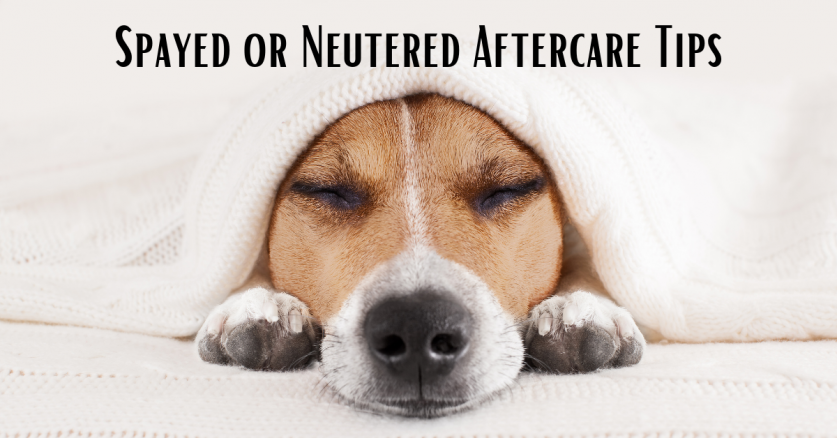
Taking Care of Your Dog After They’re Spayed or Neutered
Posted Mar 14, 2022 in Health & Safety
According to statistics, around 85% of dogs in the USA are neutered or spayed. This procedure means that our canines are no longer able to reproduce. Although this may seem scary, spaying and neutering are routine procedures done daily throughout the nation.
Spaying and Neutering
These words may be confusing to those who do not have dogs or maybe even those who adopted their canine. Spaying refers to removing a female pup’s reproductive organs, whereas neutering refers to the removal of a male dog’s testicles.
Why Are the Procedures Performed?
These procedures are performed to prevent unwanted pregnancies in our furry friends. Additionally, these surgeries have health benefits, such as avoiding the risk of cancers associated with the reproductive organs.
Although controversial, other people perform these surgeries to combat behavioral issues. They do this in hopes that it calms their fido down or reduces aggression towards other pups. However, these procedures do not always fight these issues.
The surgery does remove a dog’s sex drive and eliminates issues associated with that process, including roaming to find a mate.
What Is Involved in the Surgery?
Both spaying and neutering involve your four-legged friend being put under anesthesia.
Female Dogs
Female dogs have “seasons” every six months, and the procedure is typically performed between these seasons. This ensures that the hormones are settled. In spaying surgery, an incision is made in the abdomen of the female dog. A medical professional then removes the ovaries and the womb. In some surgeries, only the ovaries are removed.
Male Dogs
Males dogs can undergo the procedure at any point after reaching maturity. In male dogs, a small incision is made to remove the testicles.
Taking Care of Your Dog After Surgery
Day of the Surgery
Typically, dogs are taken home the same day of the surgery. However, if there are complications, they may have to stay longer.
When you pick your pup up from the vet, they may be tired and disoriented as they were recently put under anesthetics. Your vet will likely give your pooch a cone, collar, or suit to prevent them from licking their stitches. This surgery will leave their body parts slack, so they should be carried and lifted into things such as vehicles.
After arriving home, your dog will likely want to rest in a comfortable place. Your canine will probably want your company as they may be confused, restless, or in pain. It would help if you tried to offer your dog some food and water, but they may not be interested.
It is best if you let your dog rest for as long as possible. Additionally, they should not climb stairs, play, or jump onto furniture. These activities could tear the stitches, which would only cause further complications and pain.
After the Surgery
Your dog may not act like themselves at first, but they should regain their confidence and spunk after a few days.
If your dog is playful or active, you should continue to limit activities as it might pull out the stitches or cause inflammation. It would help if you encouraged your dog to rest. Try giving them a chew toy or puzzle toys to promote still contentedness.
You will likely have a follow-up appointment after a week or so where your veterinarian will be able to guide you in how your canine is improving. They will let you know whether or not your dog is ready for further activity.
Recovery for these surgeries typically takes a full 4-6 weeks. The important thing is to be there for your pooch as they will likely be confused and restless.